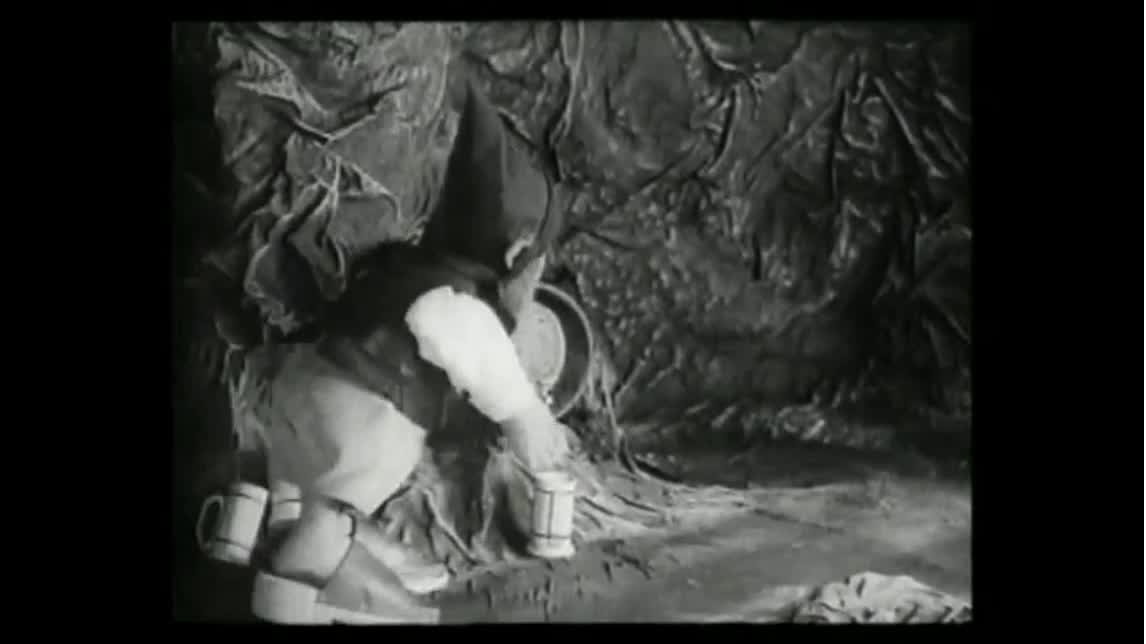Premium Only Content

Mary & Gretel c.1917 : Two dolls who are gifted real life by a magical fairy
Mary & Gretel (1917) is a seven-minute-long black-and-white silent film that was adapted from a series of books called MoToys in Life, released by Toyland Publishing Co. and brought to the silver screen by the renowned American animator, Howard S. Moss (1881 — 1964). The story revolves around two dolls who are gifted real life by a magical fairy, whose only request is for them not to pick the wild flowers they encounter in the forest. As they explore, the duo comes across a sleeping Rip Van Winkle, drunken woodsmen, and even a mischievous bunny with a penchant for alcohol. However, with time they forget the fairy’s request and pluck the flowers causing the fairy to reappear and reverse her spell.
The movie is an impressive accomplishment and an invaluable contribution to cinema, in particular because of how difficult it was for stop-animation filmmakers to create a fairly convincing illusion of life, such as the kind so brilliantly depicted in this vintage film. For an audience not yet spoiled by the increasingly sophisticated visual effects made possible by CGI and other modern technologies, Mary & Gretel certainly stood out from other silent films released at the time. Still, despite the incredible result, the film receives criticism to this day. In Animating Space: From Mickey to Wall-E (2010), author J. P. Telotte argues that:
“The animated dolls employed for this film move awkwardly, and their limbs have little articulation. More to the point, though, is that they have little to do, and the action takes place entirely in a poorly realized forest and cave. The title characters, brought to life by a fairy, simply wander through the forest, where they watch three dwarfs bowl and drink ale, see a white rabbit also indulge and become drunk, and pluck flowers, whereupon the fairy reappears and deanimates them. The forest is composed of a few out-of-scale bushes and twigs that merely provide a shallow background for the doll’s movements and remind us that one of the most difficult tasks involved in this sort of animation is the construction of the miniature sets within which the action unfolds. Because of that difficulty, the only scene composed in depth is that of the dwarfs bowling, and even here the space is truncated to fit everything into the frame; movement into the frame is eliminated because of that necessarily compressed space. The emphasis is on the largely side-to-side movements of the three-dimensional figures, the fantasy context serving as license for the sketchily rendered world of the film.”
It’s hard to convey the amount of complexity and difficulty that was involved in animating Mary & Gretel, considering that this film was one of the first cinematic ventures into understanding and using the frame’s spatial possibilities. Furthermore, working with dolls as opposed to clay figures, or other more malleable materials, required implementing some creative solutions, most obviously at the expense of realism. To properly scale all of the moving parts and contextualize them in a believable setting involved a time-consuming learning curve and an unwavering attention to detail. Still, years before shows like Gumby, South Park, and Robot Chicken would make stop animation works a staple of American entertainment, Mary & Gretel was a serious cinematic achievement.
-
 1:26
1:26
Tommytinker
4 years agoMagical Fairy Quotes for Autumn
20 -
 1:10
1:10
Teeliesfairygarden
4 years agoCreating a Magical Fairy Garden for Children
58 -
 0:07
0:07
Tommytinker
4 years agoCelebrate The Magical Royal Fairy Garden
58 -
 1:15
1:15
Teeliesfairygarden
4 years agoHow to Create a Magical Christmas Fairy Garden
37 -
 1:03
1:03
TotallyDroned
4 years agoMagical Tree in Fairy Lake
13 -
 1:44
1:44
Teeliesfairygarden
4 years agoA Magical Fairy Look – Match Your Mask
39 -
 1:15
1:15
Teeliesfairygarden
4 years agoExplore Teelie’s Fairy Garden’s Magical Etsy Shoppe
16 -
 0:05
0:05
Tommytinker
4 years agoRuby The Ribbon Fairy's Magical Fairy Garden
7 -
 1:12
1:12
kwoodruff
4 years agoMagical tour of creative DIY fairy garden
721 -
 10:53
10:53
Pristine Space
4 years agoA Real Fairy Flies into My Video!
108